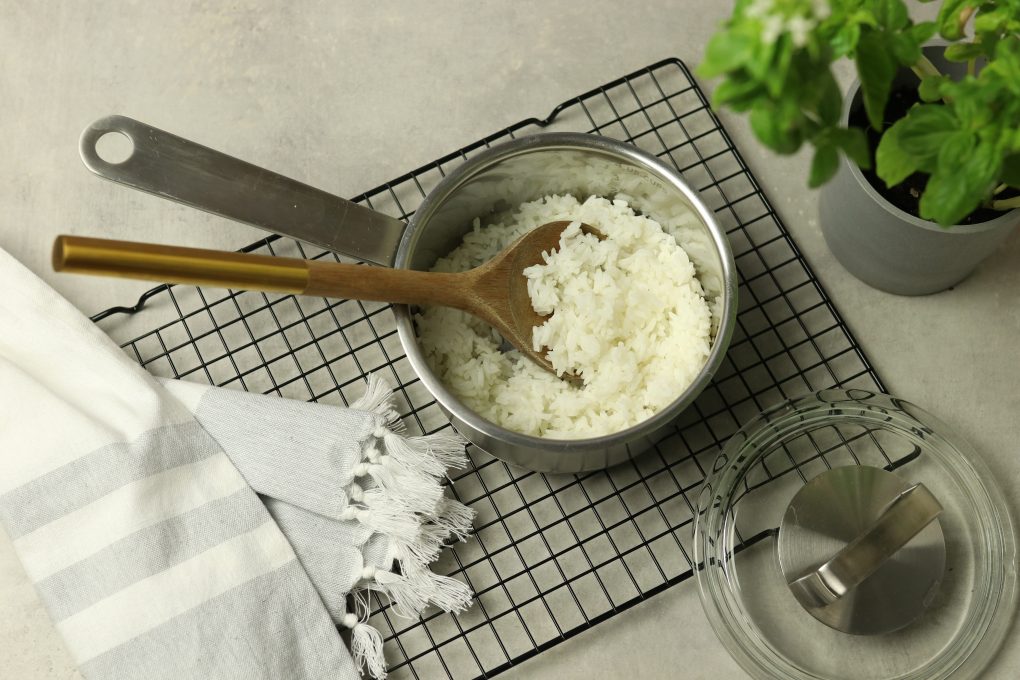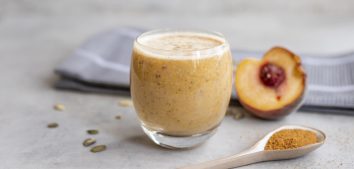
Resistant Starch: the Ally of Stable Glycemia
Carbohydrates are the main energy source of our diet. As you probably already know, there are simple and complex carbohydrates, which include starch. Potatoes, groats, rice, pasta – these products are often feared not only by people struggling with diabetes (due to the high glycemic index and the increasing glycemia that occurs after consuming them). In the article I will show you a simple way to lower these values. We’re talking here about resistant starch! Read carefully and note down some simple methods that you can use in your diet today 🙂
Firstly, Some Facts about Resistant Starch
Fact no 1.: Consuming resistant starch has a positive impact on human health.
Fact no 2.: Resistant starch may improve carbohydrate and lipid metabolism and help stabilize body weight.
Fact no 3.: Resistant starch as a prebiotic has a positive effect on intestinal function.
Let’s Start with the Basics – What Is Starch?
As I’ve already mentioned, starch is the main source of energy from carbohydrates in our diet. It is classified as a complex sugar. It is a polysaccharide consisting of two glucose polymers (molecules): amylose and amylopectin. It is the ratio of amylose to amylopectin that influences the glycemic index of a food product. However, before glucose from starch can be absorbed in the small intestine, a number of digestive processes must take place.
Where Do We Find Starch in Food?
Starch can be found in products such as: potatoes, cereal products (groats, rice, flour and products prepared from them, such as bread, pasta, dumplings or pancakes). What’s more, starch is also found in legumes, some vegetables (especially root vegetables) and fruits (e.g. in unripe bananas).
What is Resistant Starch?
Resistant starch (RS) is the sum of starch and its breakdown products that are not absorbed in the small intestine of a healthy person. There are five different forms of resistant starch. It is treated as a component of dietary fiber and has health-promoting properties.
And now a few facts from food technology. Discover the little magic in food! Raw starch is not digested by our digestive tract, products containing it are best digested only after technological processing. The starch then becomes gelatinized. It begins to absorb water, and as a result, it swells and its structure loosens. The gelatinization process is not beneficial for glycemia because it increases the glycemic index of the product.
The process described in this way takes place when you cook pasta, groats, potatoes or rice. If you eat them immediately after preparation, they may cause an increase in blood sugar levels.
BUT! Let me explain a magical technological patent! The gelatinization itself is a reversible process! If we cool the dish/products, resistant starch is formed. It is resistant to the action of digestive enzymes and becomes a fraction of insoluble dietary fiber. This is the WOW effect: converting some of the starch into a resistant form causes a slight reduction in the caloric value and a lower glycemic index of your dishes. And most importantly, postprandial glycemia after consuming these products is significantly lower.
Cook It and Cool It Down!
The entire process of cooking starch-containing products and then cooling and storing them is called starch retrogradation – the reorganization of starch molecules after gelatinization and the formation of resistant starch.
How to Increase the Amount of Resistant Starch in your Diet?
- The staling process increases the production of resistant starch in the diet. Therefore, it is worth choosing stale or one-day-old bread.
- Cooling down or refrigerating carbohydrate foods in the fridge. Prepare a salad with cold groats or overnight oats.
- Thestages of ripeness of bananas. The less ripe the bananas, the more resistant starch there is in the product. Choose bananas that are greener than yellow.
- Addition of legumes to whole grain flour products. The starch of legumes has a high nutritional value. The seeds contain slowly digestible starch and resistant starch and have a low GI, high amylose composition (25-65%) and soluble fiber fraction. Try to use recipes that include legumes and flour.
Heating Products with Resistant Starch
What if we want to heat potatoes that were cooked and cooled the day before or add warm groats to a dish? You can, of course, do this by pouring hot water over the pasta/groats/rice in a sieve and reheating the potatoes in the oven or roasting them in a pan. These processes do not destroy resistant starch, and the products still have a lower glycemic index compared to freshly prepared products.
Resistant Starch as an Important Part of the Diet, Not Only for Diabetics
Resistant starch is not digested or absorbed, so it will not affect glycemic levels. Its production causes the dish to have a low glycemic index and thus increases the sensitivity of cells to insulin. When resistant starch reaches the large intestine, it is broken down by intestinal bacteria, such as Bifidobacterium and Lactobacillus, which lead to the fermentation of resistant starch in the large intestine and produce substances with health-promoting effects. These are short-chain fatty acids (acetic, propionic and butyric), which are a source of energy for beneficial bacteria in our digestive tract, which, of course, boost our immunity.
There is also one more important fact about resistant starch. It is a fraction of dietary fiber that improves intestinal functioning, prevents constipation, and improves intestinal peristalsis. It affects the feeling of satiety and thus reduces the desire to snack on high-calorie snacks.
It is very beneficial for people with elevated cholesterol and triglyceride levels – it reduces these parameters. And one more great piece of news if you care about your weight! Resistant starch has a positive effect on metabolism, and therefore supports the metabolism and energy processes, promoting the reduction of excess fat tissue.
Summary
Resistant starch is definitely an ally of stable glycemia. The process of cooking and then cooling dishes which contain carbohydrate products significantly lowers the glycemic index of the dishes and reduces the caloric content of the diet. In addition, resistant starch created in dishes has many health-promoting benefits as a fraction of dietary fiber. I encourage you to use simple ways to create resistant starch in your dishes! Such simple technological tricks will allow you to obtain many benefits for your body 🙂
Bibliography:
- Bojarczuk A., Skąpska S., Mousavi Khaneghah A., Marszałek K. Health benefits of resistant starch: A review of the literature. Journal of Functional Foods. Journal of Functional Foods 93 (2022) 105094.
- DeMartino P., Cockburn W. Resistant starch: impact on the gut microbiome and health. Curr Opin Biotechnol. 2020 Feb;61:66-71.
- Piecyk M. Skrobia wolno trawiona i skrobia oporna a indeks glikemiczny produktów skrobiowych. Kosmos, 2019,Tom 68,1 (322) 195–207.
- Raigond P. Ezekiel R, Baswaraj R. Resistant starch in food: a review. J Sci Food Agric. 2015 Aug 15;95(10):1968-78.











Comments No Comments
Join the discussion…